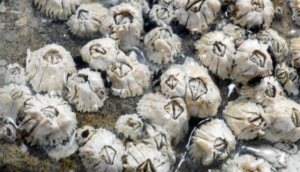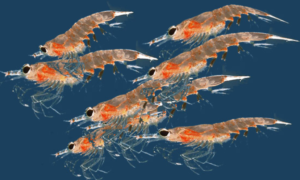 When you think crustaceans, you could probably come up with crabs and lobsters and shrimp without too much prompting. But a creature you might not consider right away is the barnacle. That’s right, those little guys you see attached to the side of ships are actually crustaceans. There are around 1220 species of barnacle knows currently (filling a tank for all of those creatures would be the dream of any water supply company), and of those, the most popular is the acorn barnacle, shown above. Barnacles are all sessile, which means that they are immobile, and attach themselves to other, larger objects with a super-sticky glue. This fast-curing cement that they produce is one of the most effective glues in the natural world, and, in fact, known to man. Having a tensile strength of 5000 pounds per square inch, it’s no wonder people are looking at a way to harvest it and use it commercially.
When you think crustaceans, you could probably come up with crabs and lobsters and shrimp without too much prompting. But a creature you might not consider right away is the barnacle. That’s right, those little guys you see attached to the side of ships are actually crustaceans. There are around 1220 species of barnacle knows currently (filling a tank for all of those creatures would be the dream of any water supply company), and of those, the most popular is the acorn barnacle, shown above. Barnacles are all sessile, which means that they are immobile, and attach themselves to other, larger objects with a super-sticky glue. This fast-curing cement that they produce is one of the most effective glues in the natural world, and, in fact, known to man. Having a tensile strength of 5000 pounds per square inch, it’s no wonder people are looking at a way to harvest it and use it commercially.
Showing all posts tagged crustaceans
Krill
 If you’re anything like me, the first time you heard of krill was in Finding Nemo, right before Marlin and Dory get eaten by the whale, and since then you’ve heard about them here and there in nature documentaries, and they’re always getting eaten. Although it’s true that they’re basically always getting eaten, but don’t you go thinking that that means they’re not important. In fact, the reason they’re so important is the fact that they’re at pretty much the bottom of the food chain. Krill can be found in all the oceans of the world, and are a source of food for whales, fish, squid, penguins (and are in far higher numbers than even my cousin’s Aurora towing services could handle, let me tell you). In fact, if the krill in the Antarctic region were to disappear, most other species in the Antarctic would disappear. Krill make such good meals because they feed on plankton, the nutrients of which they convert into a form that can benefit their predators.
If you’re anything like me, the first time you heard of krill was in Finding Nemo, right before Marlin and Dory get eaten by the whale, and since then you’ve heard about them here and there in nature documentaries, and they’re always getting eaten. Although it’s true that they’re basically always getting eaten, but don’t you go thinking that that means they’re not important. In fact, the reason they’re so important is the fact that they’re at pretty much the bottom of the food chain. Krill can be found in all the oceans of the world, and are a source of food for whales, fish, squid, penguins (and are in far higher numbers than even my cousin’s Aurora towing services could handle, let me tell you). In fact, if the krill in the Antarctic region were to disappear, most other species in the Antarctic would disappear. Krill make such good meals because they feed on plankton, the nutrients of which they convert into a form that can benefit their predators.